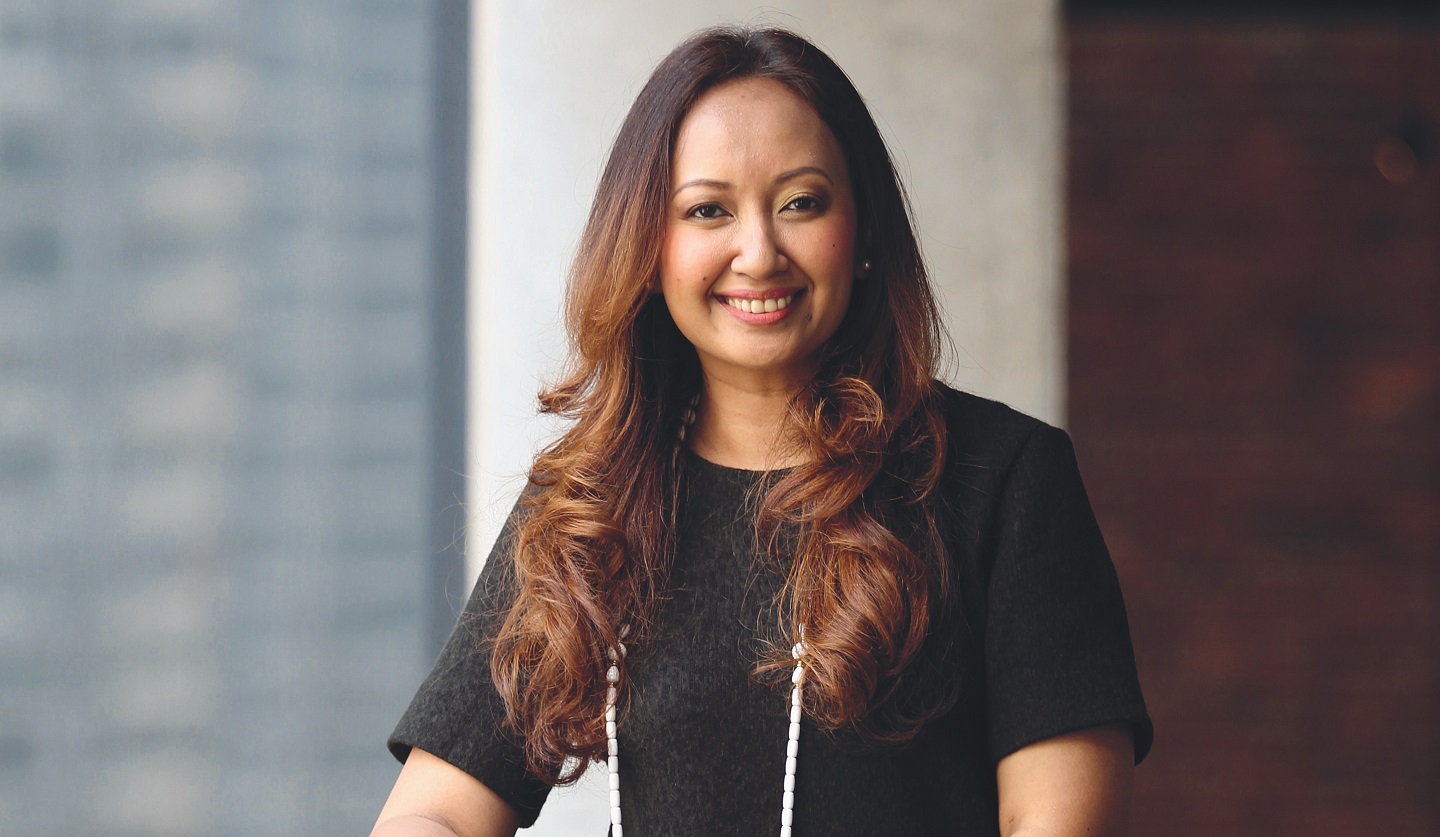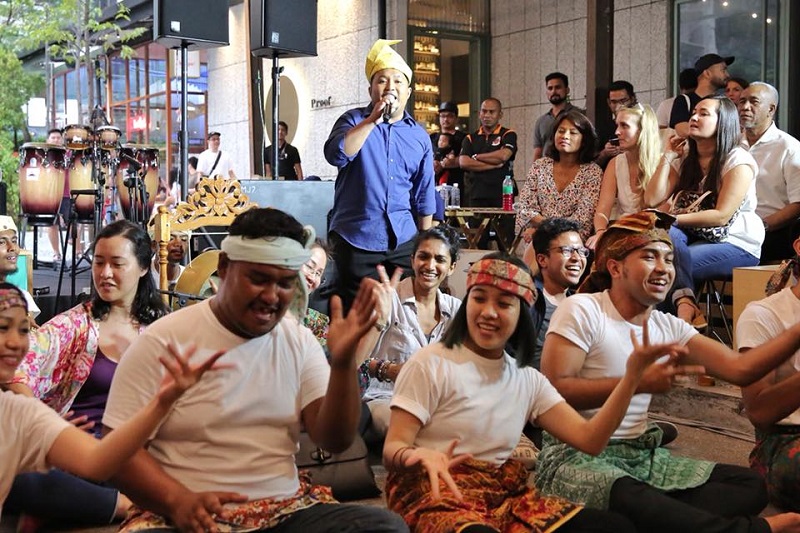
Founding CEO Izan Satrina Mohd Sallehuddin. (Photo: Mohd Izwan)
Cultural economics studies the relation of culture — defined as shared beliefs and preferences of respective groups — to economic outcomes. In simpler terms, this means how cultural activities, of which Malaysia has many, can result in meaningful economic output. This seems fairly obvious when you think about it, because as you buy tickets for a dance performance or take a Grab car to an art exhibition, it involves money being pumped into the economy. The question then becomes this: How do you enhance the value of the entire transaction, from start to finish, so that more money is made and the experience is one that is treasured and repeated?
You formalise and enrich the process, that’s how — and for that, the Malaysian government has launched the Cultural Economy Development Agency (Cendana), which oversees the development and implementation of a three-pronged strategy to energise the arts, empower communities and reorganise policies. Cendana was launched last year by Prime Minister Datuk Seri Najib Razak and will spearhead efforts to bring about an upheaval of the cultural economy across all fronts, with the Klang Valley as a staging ground. Cendana’s efforts echoes — although does not necessarily model — the way cultural economics has taken shape in cities like Melbourne, Tokyo and London.
Cendana’s founding CEO is Izan Satrina Mohd Sallehuddin, who brings to the table the extraordinary skills she applied in matching corporate funders with deserving arts groups during her time at the privately owned MyPerforming Arts Agency, which she also co-founded. Izan first appeared in Options in 2015, where she spoke idealistically about a concerted effort to enrich the arts scene — today, the political will to achieve those goals has been galvanised, and with her in charge, too.
“A lot of the nurturing and flow of investment has been going into mainstream creative industry stuff like animation and film, but the heartbeat of the nation is really arts and culture,” Izan begins. “Cendana’s focus is on three main cultural subsectors — performing arts, visual arts and independent music — in small and medium-sized public spaces. We don’t do big shows as corporates tend to support those for the tangible and visible branding. We are here to support smaller acts who need the help.”

It was during a chance meeting with Najib in 2016 that Izan had the chance to pitch the idea of building a sustainable cultural ecosystem, and the timing was ideal — KL was ready for something like this, and the government was too. Cendana is governed by an executive advisory committee that closely oversees its development and strategy implementation, and guided by an industry advisory panel that include the nation’s most experienced practitioners in the cultural sector.
The panel members include Hands Percussion founder and artistic director Bernard Goh, who represents the performing arts industry; Yayasan Budi Penyayang chairman and KitaKita founding partner Nori Abdullah (crafts); Livescape Group director Rahul Kukreja (music); artist and curator Nurhanim Khairuddin (visual arts); Pusaka managing director Pauline Fan (culture); Cooler Lumpur festival director Umapagan Ampikaipakan (literature); Arts-Ed Penang founder Janet Pillai (arts education); and Badan Warisan Malaysia vice-president Elizabeth Cardosa (heritage).
“The mandate we were given was to deliver an economic output of 2.36 times the investment — meaning that if we put RM10 into a platform, then we would try to nurture a contribution back of RM23.60,” Izan explains, referring to the monthly creative platform Riuh as an example. Incidentally, Riuh is run by MyCreative Ventures, of which Cendana is a part. “We support the cultural programming at Riuh, and if you look at the 7,000 people who attend over any one weekend — there’s money spent to get there, food people buy there, shopping and so on. That money goes back to the economy and that’s how we measure the returns on investment.”
In its seven months of existence, Izan has kept Cendana busy. Last month, submissions closed for The Emerging Artist Incubation Funding Programme, which awards up to RM30,000 to successful applicants who are actively engaged in the Malaysian arts and culture sector. A second funding programme for arts companies to be able to attend global festivals will also be announced soon. Another yet-to-be-named event that aims to profile independent artists and sell art — all below RM5,000, with the intention of growing the community of collectors — is also in the works.
A lot of the nurturing and flow of investment has been going into mainstream creative industry stuff like animation and film, but the heartbeat of the nation is really arts and culture
Up to March 9, artists are welcome to submit artworks that they feel will uplift the visual imagery of KL — as part of the Art in the City programme, members of the public can vote on the artworks they most love that will then be displayed on strategically located buildings in the city. This event, in particular, closes the gap between the artists who create the work and members of the public, who don’t always have the means to access them. There are also other big-picture benefits like raising greater awareness of the breadth of local talent and positioning Kuala Lumpur as a cultural and creative city. Public voting for the artworks will be between March 26 and April 7, and you can expect to see the artworks up within the following few months.
“We’ve been lobbying for different buildings to be on board — we have convinced Bursa Malaysia so far, as well as the Maybank Foundation, which will provide us with the exhibition space,” Izan says. “We are looking at other building owners and hoping that they will reach out to us for this project if we haven’t been in touch with them.”
Cendana has been established as a five-year programme to achieve its objectives — does that mean that by the end of that time, it will be dissolved? “Perhaps, we aren’t too sure,” she muses. “The budget announcements came with a specific intent, like Pemandu, which has now been consolidated to be an independent private management consultancy. In the case of Cendana … well, we need to illustrate to our stakeholders and the powers that be on the power of the arts. If we demonstrate that, we can extend beyond the five years and even move to other cities outside of KL.”
Our artistic and cultural heritage is a valuable asset — this is not new, but in a local context, acknowledging it and creating an ecosystem for it to flourish certainly is. An agency like Cendana has been a long time coming, and Izan is visibly excited about what it is able to achieve over the next five years — especially since it is an extension of a lot of the work she has already done over the course of her career in this space.
“I am told I am very persistent,” she laughs. “I am very good at cultivating relationships that become friendships — and that has helped a lot because relying on those relationships just makes it so much easier and faster to get things going. I have a heart for the arts, but also, the mind and language that’s required for the different conversations Cendana has with the government, the private sector and the community.”
Izan often refers to one of Najib’s quotes made during Cendana’s launch to really define what its role is, beyond the KPIs and the mandates. “If you want to build a civilisation, then the core of that civilisation is in the form of arts and culture. Art is the soul of the nation, without that soul, what do you get? You get high-rise skyscrapers, you get physical infrastructure, but you don’t have a soul, and we want a soul for Malaysia.”
This article first appeared on Mar 5, 2018 in The Edge Malaysia.


